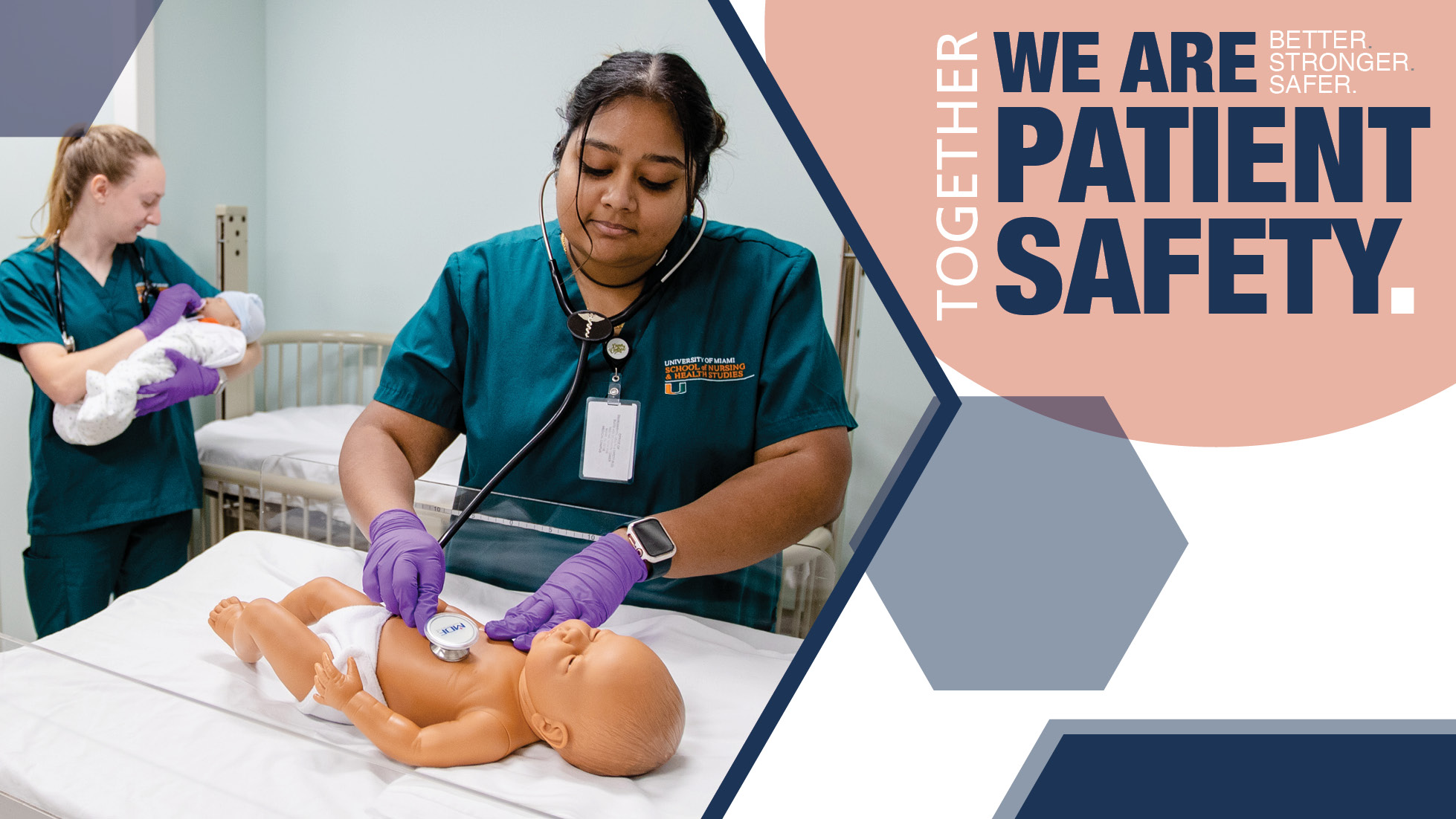Patient Safety Awareness Week 2023 takes place from March 12 to 18 under the theme “Together we are patient safety: Better, stronger, safer.” This annual recognition event encourages everyone to learn more about health care safety.
Because University of Miami students are on Spring Break during the official patient safety week, the SONHS Patient Safety Committee will sponsor its Patient Safety Awareness Week events starting Monday, March 20. “We will hold a variety of interactive patient safety activities, including online games, basic simulation stations, and other types of hands-on activities,” says Dr. Mary Mckay, professor of clinical and Wallace Gilroy Endowed Chair in Nursing.
Students who participate in the event in the main SONHS lobby from 10:45 a.m. to 1 p.m. will have the opportunity to win Starbucks gift cards. Other SONHS nursing faculty assisting with the event include Drs. Deborah Salani, Beatriz Valdes, Latoya Lewis, and Yui Matsuda. Student leaders Jessica Gomez, vice president of NSNA, and Ashley Phillips, NSNA E-board facilitator, are helping too, notes Dr. Mckay.
The Simulation Hospital Advancing Research and Education (S.H.A.R.E.™), led by Associate Dean Ruth Everett-Thomas, will host its patient safety awareness activities on Wednesday, March 22.
“Patient safety is a critical component of nursing care and the concept is threaded throughout the curriculum at the School of Nursing and Health Studies, including in simulation and all clinical activities,” explains Dr. Mckay.
Although patient safety measures are widely recognized as important today, their significance wasn’t always so obvious to the medical community. A little history for context. In the 1850s, while working as a nurse in Turkey during the Crimean War, Florence Nightingale observed the horrors of the military hospital. Soldiers who didn’t succumb to their battlefield wounds often died from disease and infection spread patient to patient by those most intent on saving them. In this setting, Nightingale and a team of nurses painstakingly identified and documented the deadly impact of overcrowding, poor hygiene, and lack of ventilation, laying groundwork for a profession focused on patient safety. The sanitation protocols Nightingale insisted on, including hand-washing, clean water, sterilized surgical instruments, fresh bed linens, and others, had a dramatic result. Mortality rates in the hospital plummeted from over 40 percent to just 2 percent.
Yet, despite significant progress in the last two centuries, the World Health Organization, which recognizes World Patient Safety Day on September 17, estimates that 134 million adverse events occur each year due to unsafe care in hospitals in low- and middle-income countries, resulting in some 2.6 million deaths. Additionally, some 40 percent of patients experience harm in ambulatory and primary care settings with an estimated 80 percent of these harms being preventable, according to WHO. The Institute for Healthcare Improvement notes that some studies suggest there are as many as 400,000 deaths in the United States every year as a result of errors or preventable harm.
“Medication error is one of the most common errors nurses are involved in,” notes Dr. Mckay, whose research in patient safety includes the development of an adverse event online reporting system used in simulation and an evaluation of the effects of a simulation-based pharmacology intervention on medication-associated adverse events among pre-licensure nursing students.
A recently published article by another SONHS faculty member, Dr. Carmen Presti, associate professor of clinical, addresses one such case of medication error that made national news—the case of RaDonda Vaught, a registered nurse in Tennessee who was convicted of criminally negligent homicide after a medication error led to the death of a 75-year-old patient.
“It seems clear nurse error was not the sole factor leading to the tragic death of patient Charlene Murphey. Recognizing this is key to ensuring the safety of future patients,” states Dr. Presti. “The cause of the error was not just an individual’s negligence but the lack of safety checks that can lead to human errors….
“Charging nurse Vaught with a crime may cause future errors to go unreported, so we may lose the opportunity to identify system failures and address them appropriately,” continues Dr. Presti in the October 2022 article. “Instead, the death of Mrs. Murphey should be a warning signal for hospitals onboarding new nurses to take the time to teach critical thinking and patient assessment, using technology as an aid—but not a replacement—for high-quality care and patient safety.”

